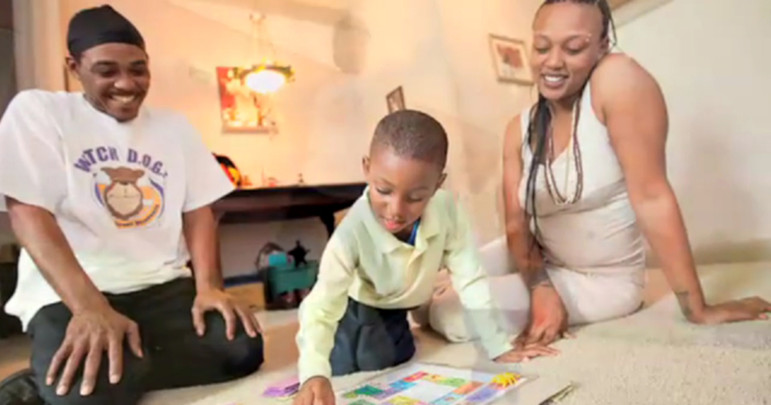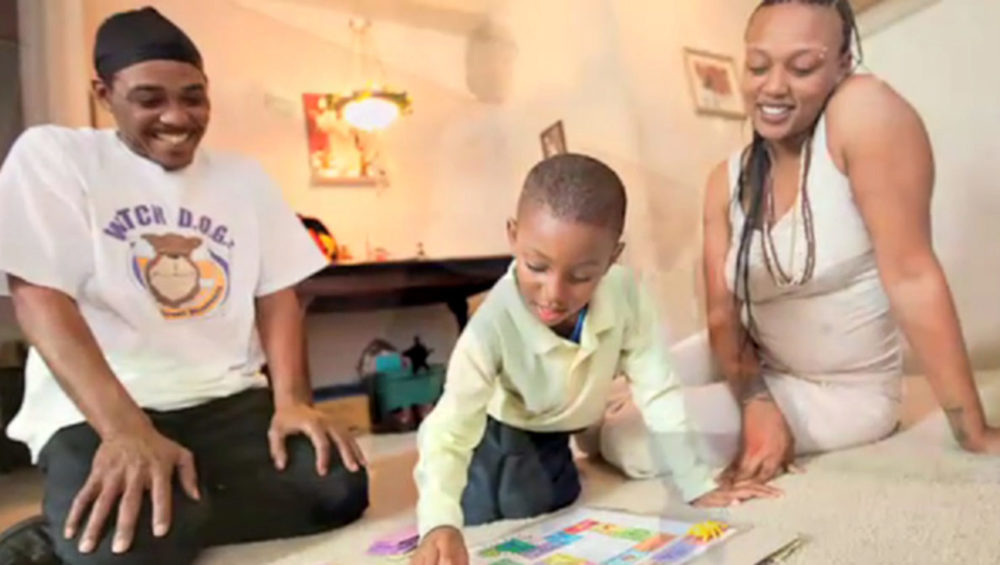
Dunbar Early Learning Complex
The Center for Working Families supports parents by providing subsidized childcare in a comprehensive program at Dunbar Early Learning Center.
Just off I-20 in the Mechanicsville neighborhood of Atlanta, two wide brick buildings sit, separated by parking lots and a swath of open space. One is the Dunbar Learning Complex and the other is a neighborhood center chock-full of offices.
In the Dunbar Learning Complex, little kids from 6 months to 4 years attend a comprehensive child development center and then graduate directly to the elementary school in the same building.
Across the way, in the Dunbar Neighborhood Center, their parents get intensive job-hunting, job-skills and career advancement help.
It’s an example of a two-generation approach to assist people moving out of poverty.
“The two-generation approach is really a way of working,” said Leah Austin, deputy director at the Annie E. Casey Foundation’s Atlanta Civic Site. “We have a set of programs, the Early Learning Center and the Center for Working Families.” They support children and parents simultaneously.
The Center for Working Families is an office housed in the Dunbar Neighborhood Center that assesses the adults’ needs and connects them to various services such as literacy programs, GED preparation, entrepreneurship workshops, financial planning classes, job training and home ownership programs.
It currently serves about 400 people, said Cerissa Bartlett, the two-generation coordinator at the job center. Of those, 126 have children and participate in the two-generation program. Their children are enrolled in the Early Learning Center for free.
It’s a friendly place. Latandra Crowder, a former client at the Center for Working Families, drops by from time to time to bring ice cream. She went through an entrepreneur training program at the center and then started an ice cream truck business known as Poole’s Ice Cream.

Dunbar Early Learning Complex
Ardell Polley visits his son\’s classroom at the Dunbar Early Learning Center in Atlanta, where a fatherhood initiative encourages dads\’ connections with their children.
Each person who seeks services gets a “pathway coach” and pursues one of three tracks: literacy, job readiness or career advancement.
Those entering the job readiness track do a 20-day program that teaches the skills of resume creation, interviewing and job hunting, Bartlett said.
“Some have transportation barriers, some have legal barriers” such as a prior criminal conviction, Bartlett said. A pathway coach works with each client to develop an individual approach.
Security guard Christine Jones sits in the reception area of the neighborhood center. She praises the Center for Working Families.
“They help the community. I like that,” she said. “They try to get you back on your feet.”
People say they can’t get a job because they don’t have the skills. But here you can get your GED and learn some job skills for free, she said.
Disconnected young parents
While a two-pronged approach may be useful to low-income parents of any age, it could fill a crucial need among the youngest of parents, according to a recent report by the National Human Services Assembly (NHSA).
About 1.4 million young people ages 15-24 in the United States have children but don’t have a job and aren’t in school, the report said. They’re unlikely to find a path to financial independence without community support, the report said, and the cycle of poverty will be perpetuated.
The report, “Breaking the Cycle of Poverty in Young Families: Two-Generation Strategies for Working with Disconnected Young Parents & Their Children,” looked at 32 organizations using the strategy.
The idea is to shield young children from the negative effects of growing up in poverty and
re-engage parents in education and work while supporting the child-parent bond.
It’s a holistic approach that connects parents with the variety of services they need, and it involves working across various organizations.
Such approaches face challenges, however. “Funding silos” — in which money is earmarked for very specific purposes — can make it hard to fund multi-faceted programs.
“Government-funded systems are not designed with young families in mind,” the NHSA report said.
It pointed out that society has negative attitudes toward disconnected young parents. As a result, some services are less available to them and they are less likely to seek support.
The report said the quality of jobs available to young people needs to be improved and
childcare needs to be more available in the workplace and at school.
The Annie E. Casey Foundation’s strategy at the Dunbar Learning Complex is to provide the crucial supports needed by children from birth through third grade. Low-income children are less prepared for success in school and this “readiness gap” leads straight into the school “achievement gap,” according to the foundation’s report “Early Warning: Why Reading by the End of Third Grade Matters.”
The idea is based on research indicating that third grade is a make-or-break time — that reading proficiency by third-grade is vital to further academic success.
The center also focuses on parent engagement, with a family support specialist who teams with parents to monitor the child’s development. A fatherhood initiative brings dads into the classroom. The Early Learning Center has slots for about 200 children.
The two-generation approach is not exactly new – it began with Head Start in 1965 — but it has gained renewed interest. With more than 20 percent of children living in poverty and the gap widening between rich and poor, the strategy is getting a new look.
In Atlanta, the two-generation approach developed after the Center for Working Families held focus groups asking participants about their needs, Austin said.
Childcare, they replied.
The Casey Foundation began working with childcare providers in the neighborhood to improve their offerings and increase their capacity.
But the staff at the foundation began to hanker for “a bigger and bolder solution,” Austin said.
They joined with Atlanta Public Schools and the nonprofit Sheltering Arms to develop childcare alongside an existing elementary school.
Casey is the primary funder, but other private and public funders contribute.
Around the country, some other foundation are also supporting two-generation programs: the Bill and Melinda Gates Foundation, George Kaiser Family Foundation, Foundation for Child Development, W. K. Kellogg Foundation and the Aspen Institute’s Ascend center.

























